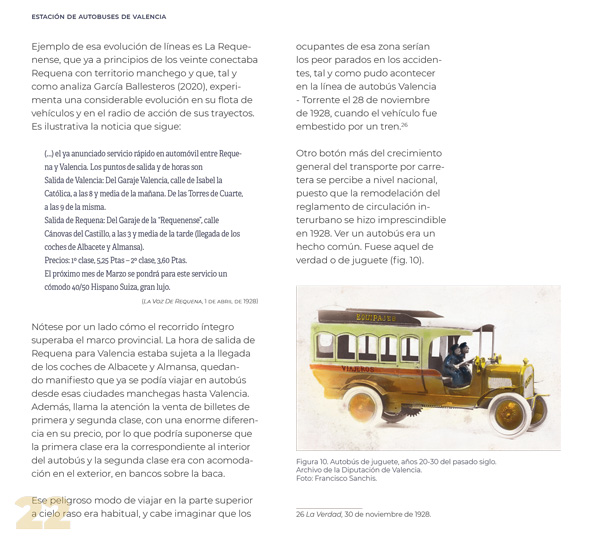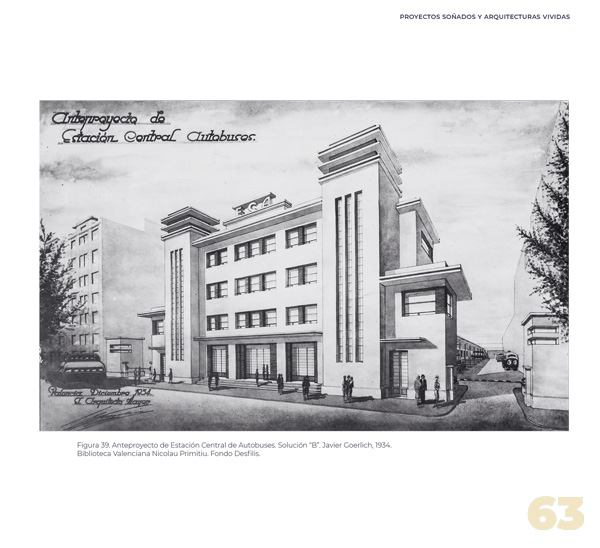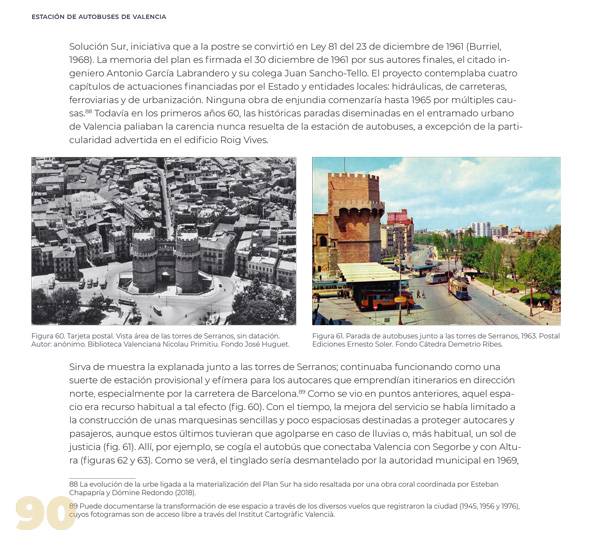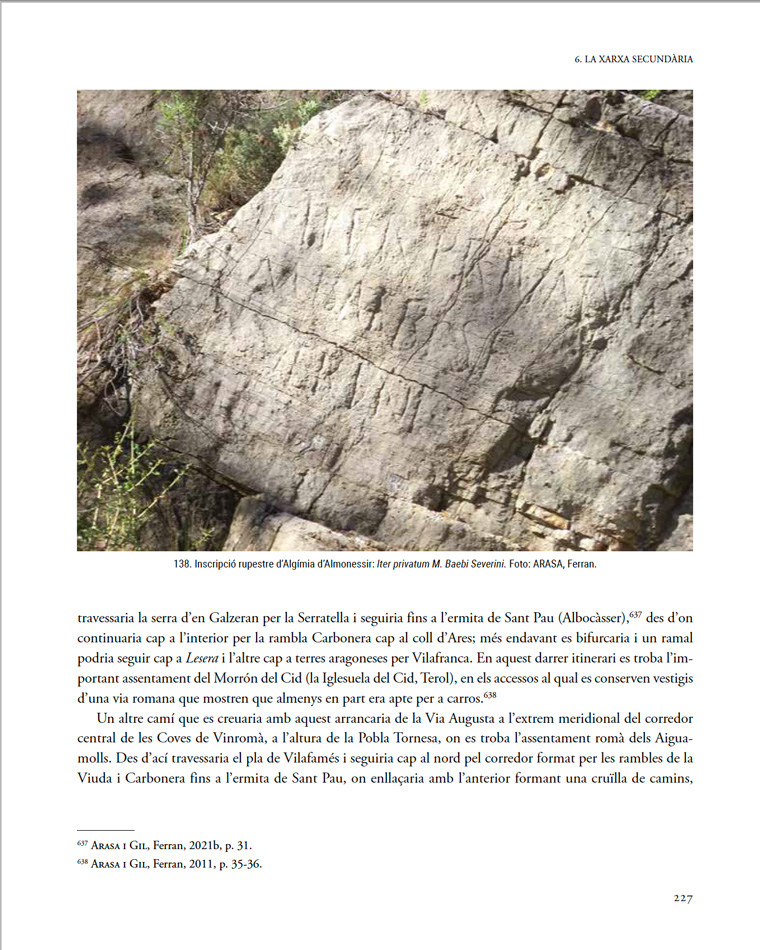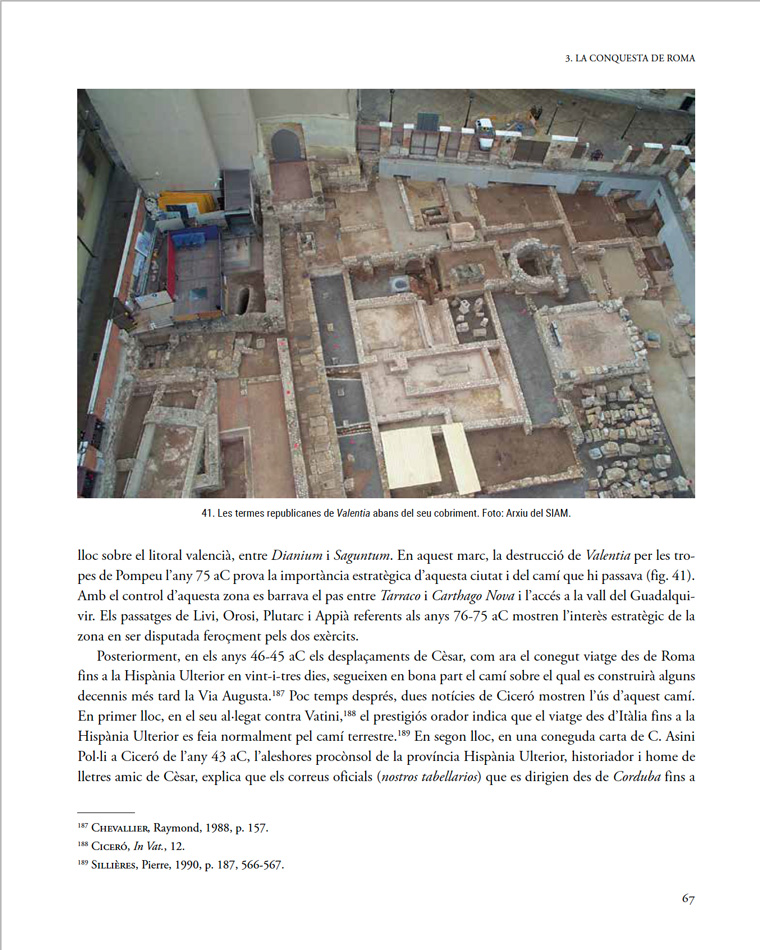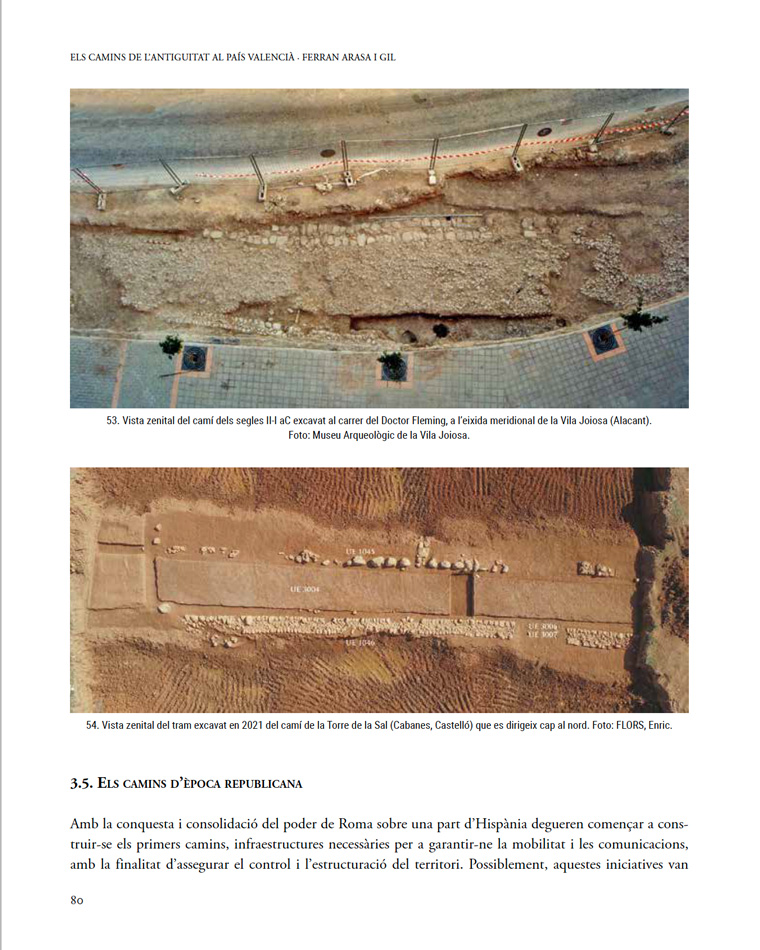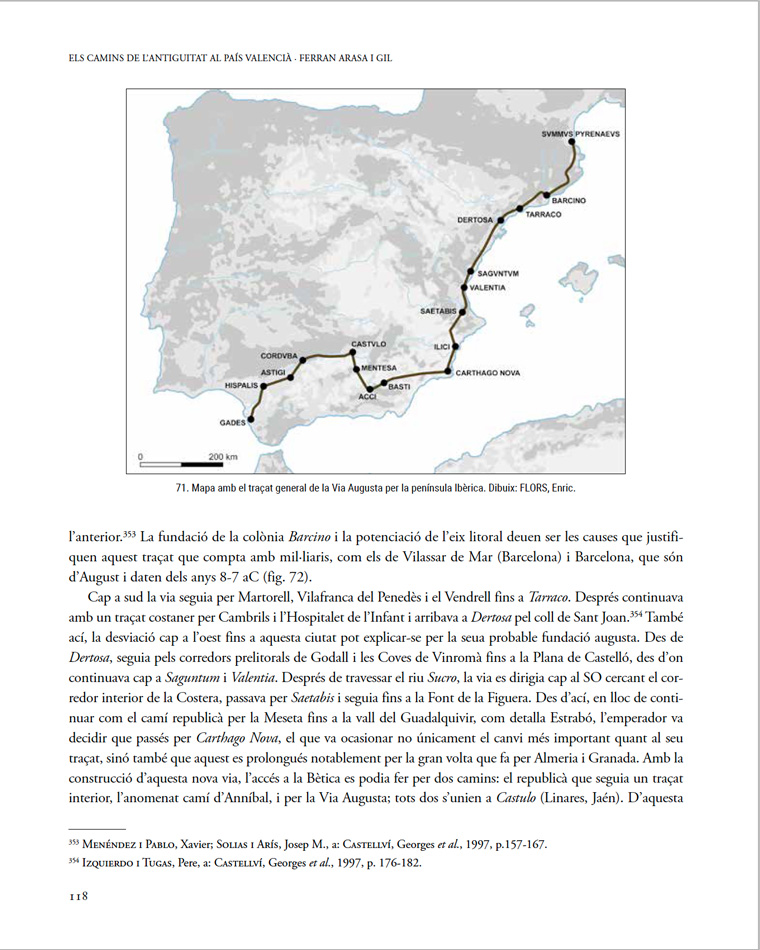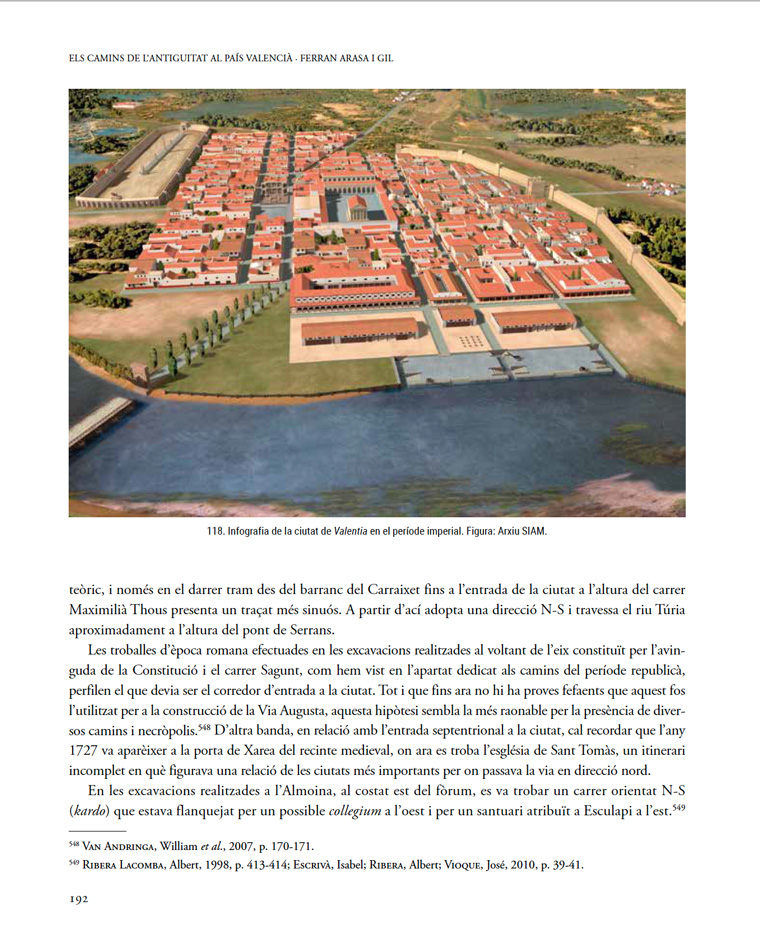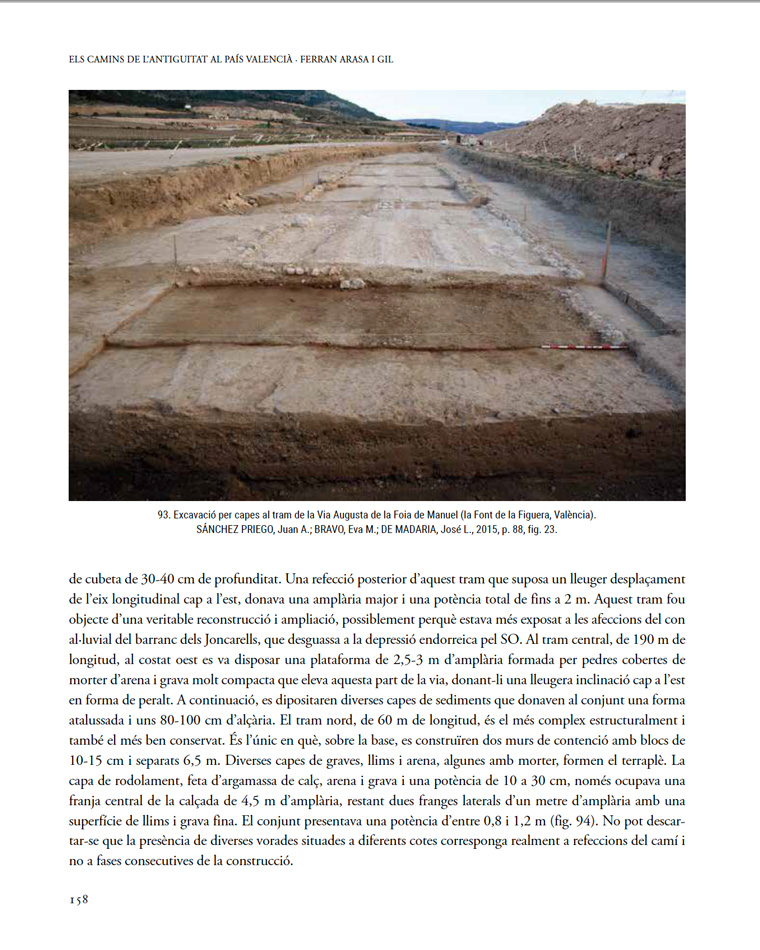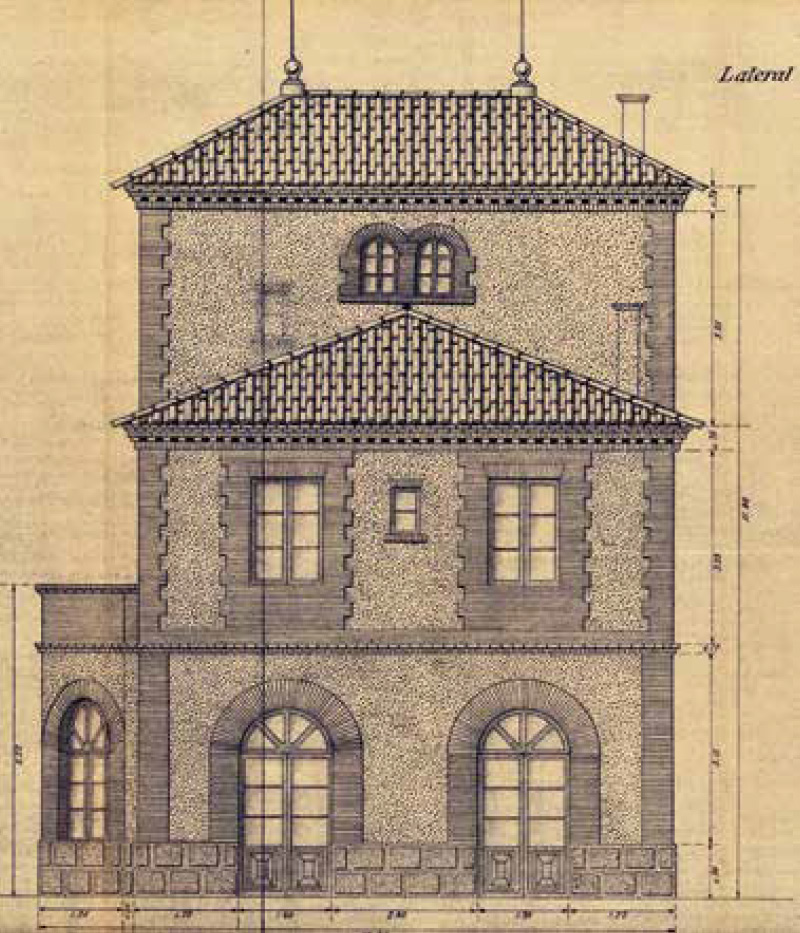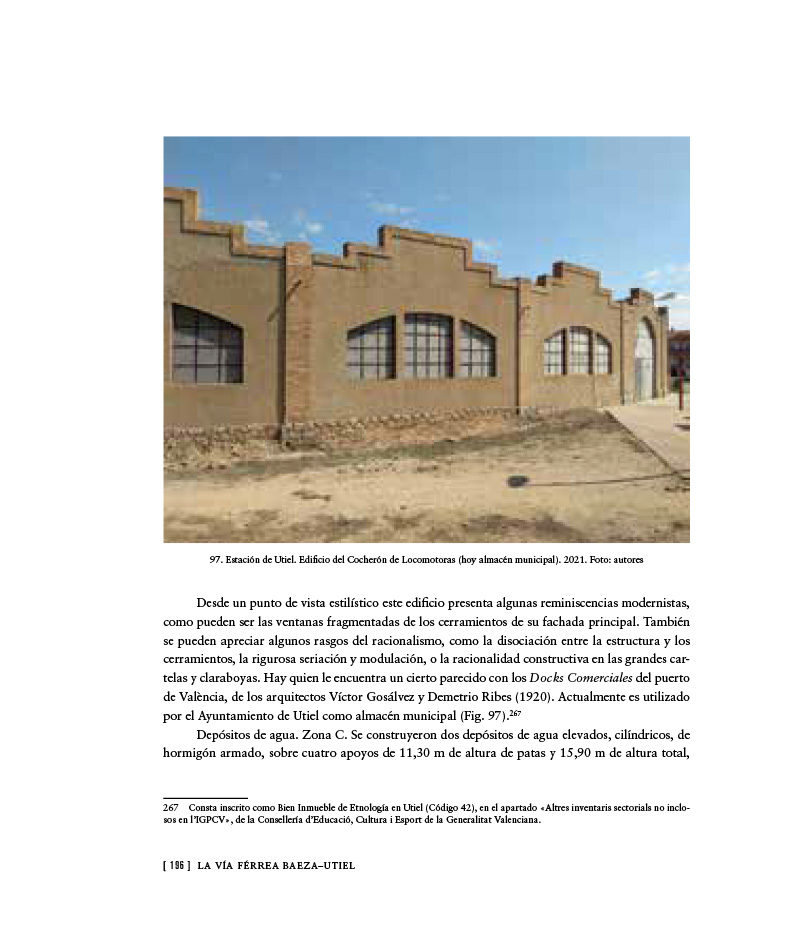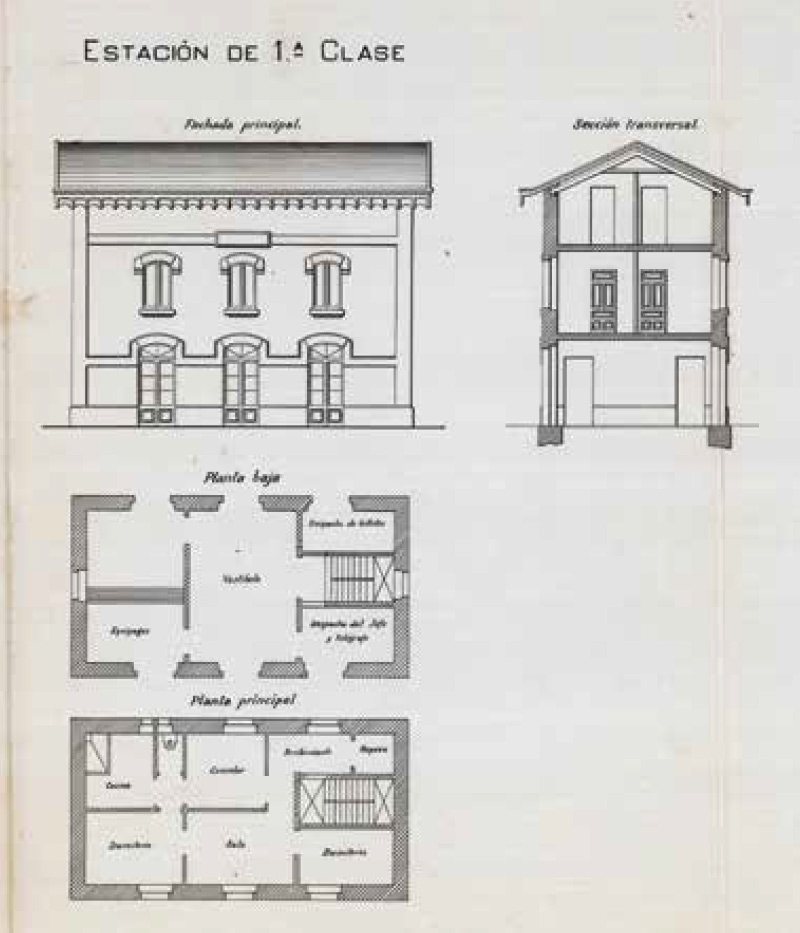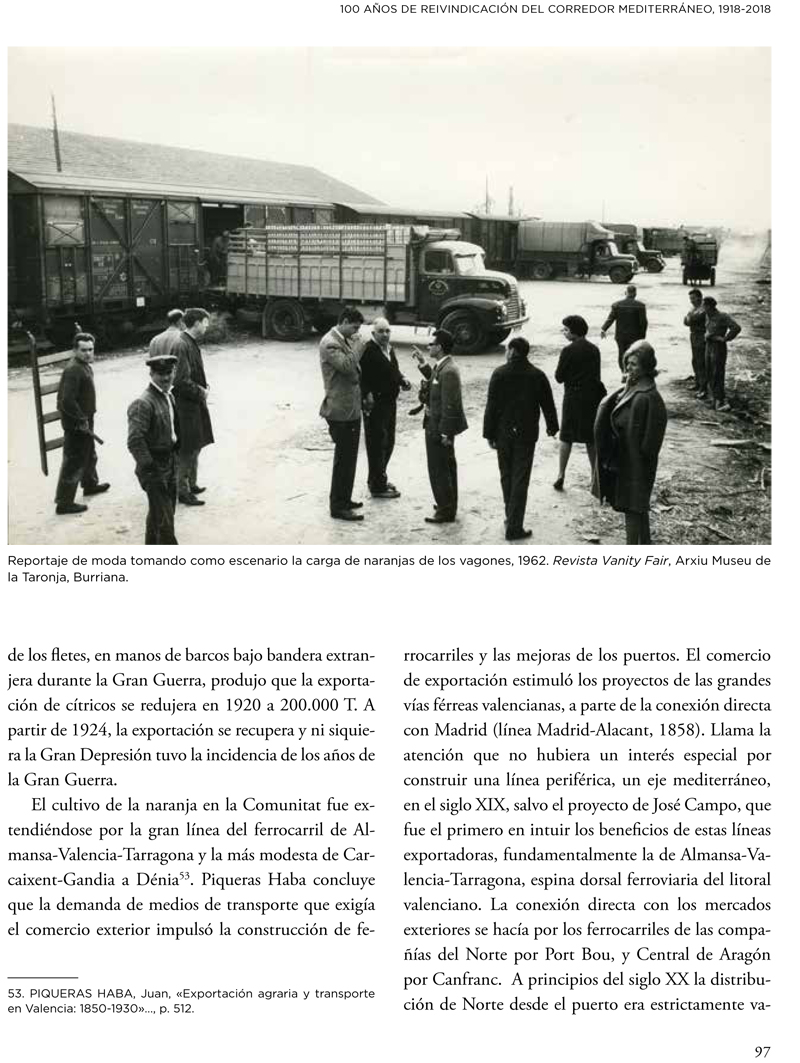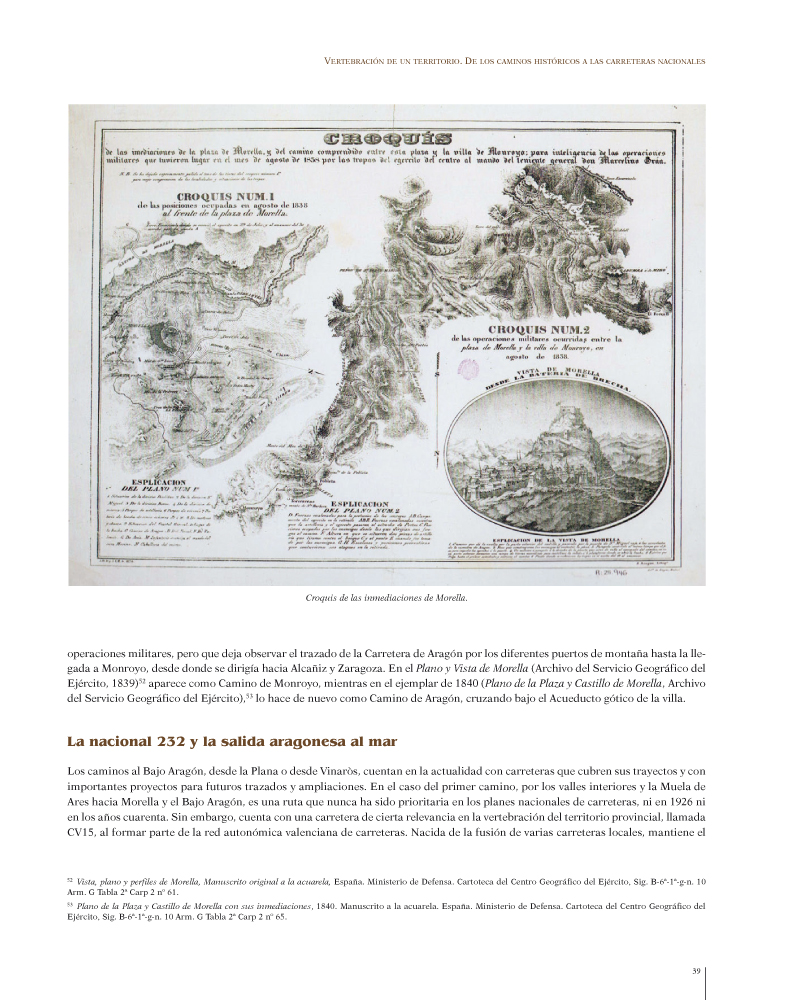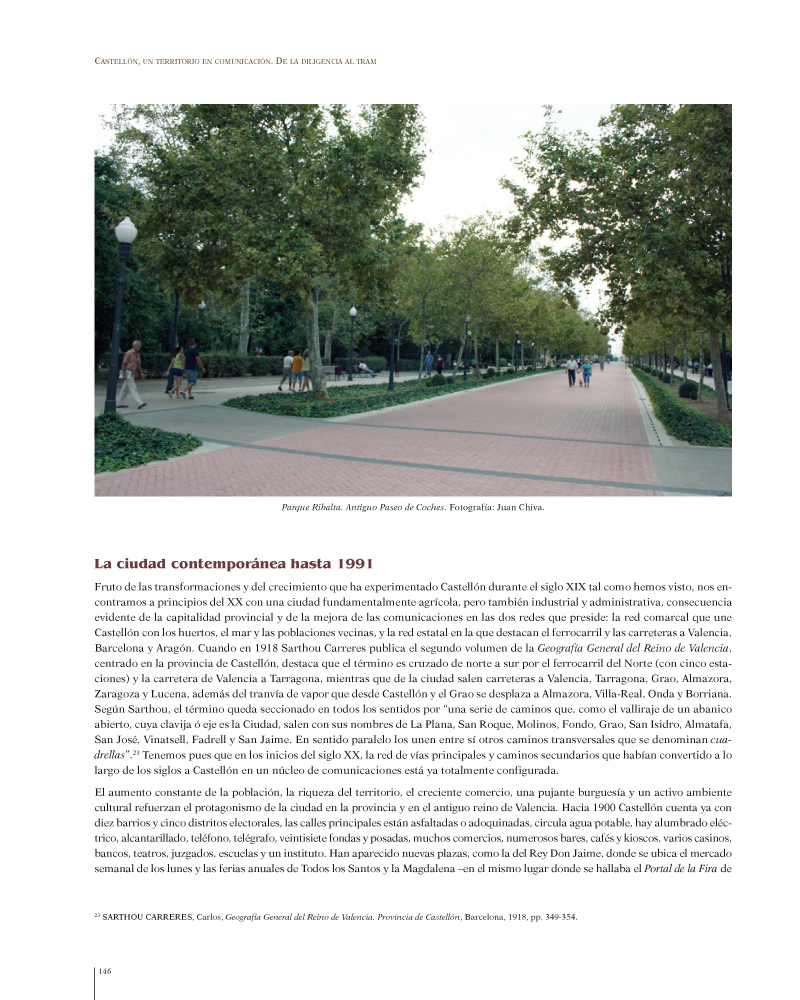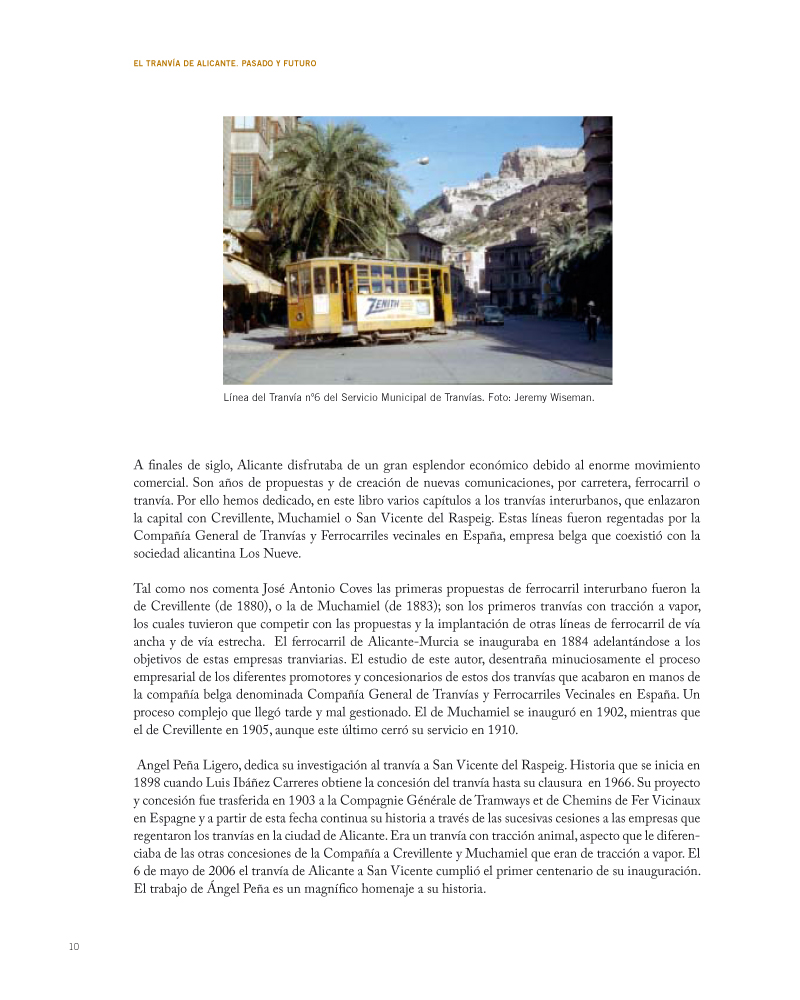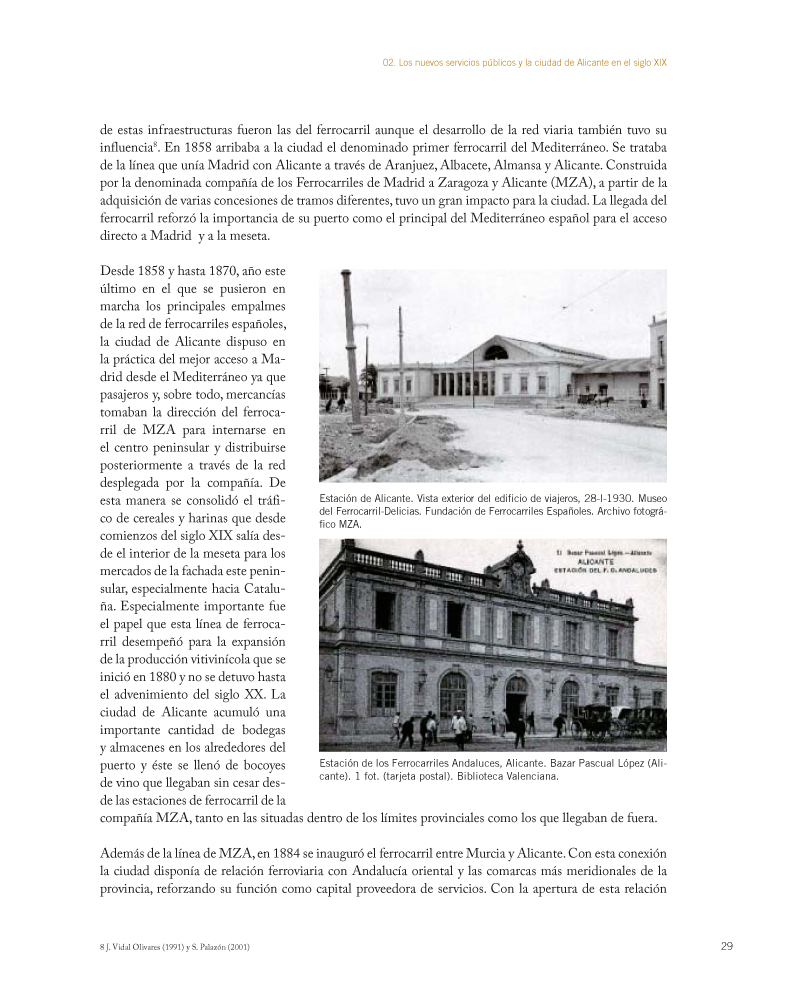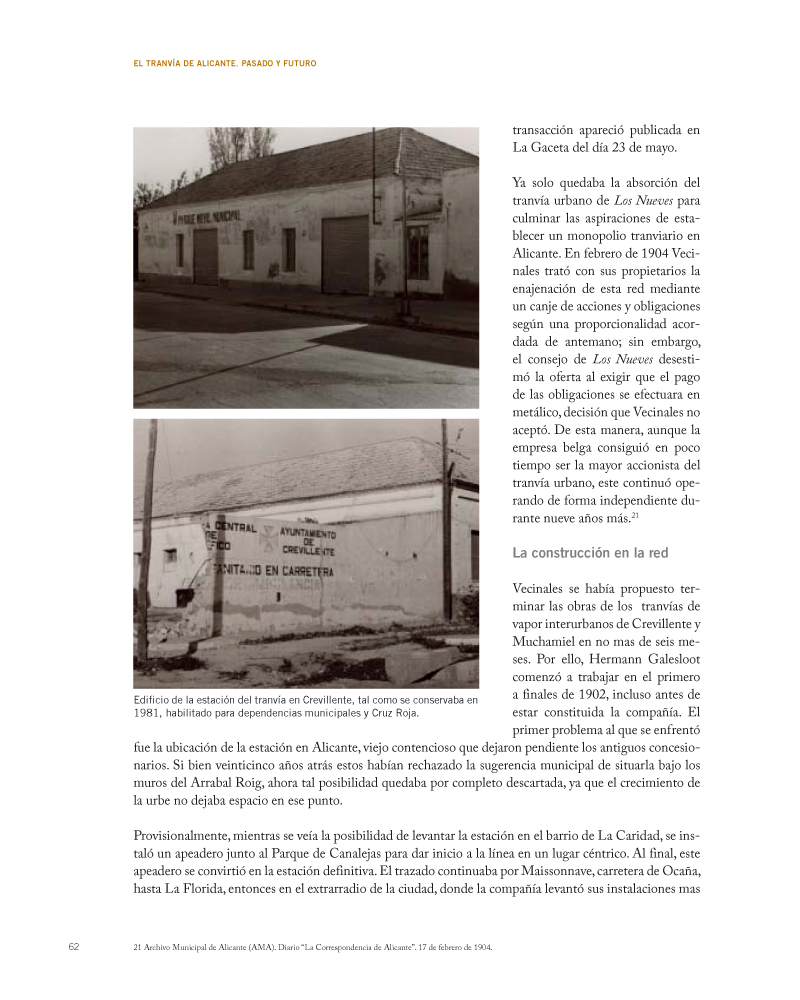-
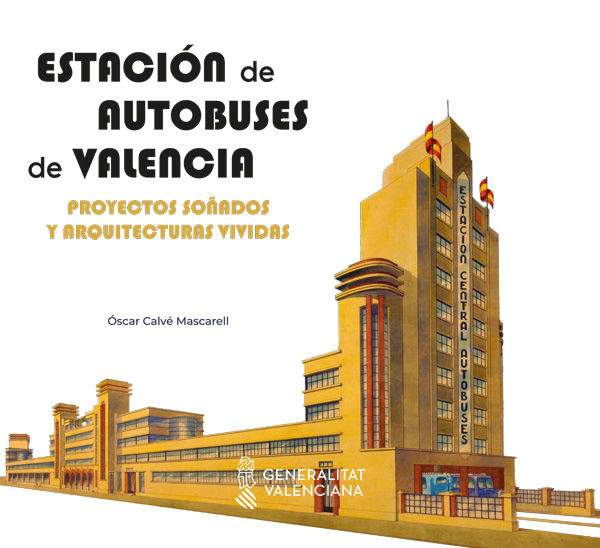
Valencia Bus Station.
CALVÉ MASCARELL, Óscar
València: Council of Environment, Water, Infrastructure and Territory , 2023. LlibreThe publication of the book 'Estación de autobuses de Valencia. Proyectos soñados y arquitecturas vividas' highlights an aspect that has scarcely been dealt with: the history of the city's longing for an infrastructure capable of reorganising the chaos derived from the appearance of the intercity bus. A circumstance that emerged precisely in the 1920s and which, as the title anticipates, stimulated the imagination of famous architects who drew up projects that were almost never executed, but also the efficiency of notable engineers. The latter was manifested in two infrastructures that met with very different fates. All of this is covered in this small but comprehensive volume which, above...
The publication of the book 'Estación de autobuses de Valencia. Proyectos soñados y arquitecturas vividas' highlights an aspect that has scarcely been dealt with: the history of the city's longing for an infrastructure capable of reorganising the chaos derived from the appearance of the intercity bus. A circumstance that emerged precisely in the 1920s and which, as the title anticipates, stimulated the imagination of famous architects who drew up projects that were almost never executed, but also the efficiency of notable engineers. The latter was manifested in two infrastructures that met with very different fates. All of this is covered in this small but comprehensive volume which, above all, offers the reader a journey back in time through facilities corresponding to a specific function and typology.
Read more HideIndex
State of the matter
- The emergence of the bus in the city
- A first station project for Valencia in 1929
- The ephemeral pretension in 1931 of a group of architects: Tejero, Sedano and De la Mora
- 1934, a prolific year in initiatives
- The halt of the Santonja building
- The project by Luis Basset Badía
- Goerlich at the service of the ambitious municipal aspiration
- The return of ideas in the post-war period. Goerlich's role
- Another unsatisfied municipal project
- The private hand and ‘the first station’ in Valencia
- Two stations for the reborn city
A look back as epilogue
Details
[Read more] [Hide] ISBN: 978-84-482-6928-9 -
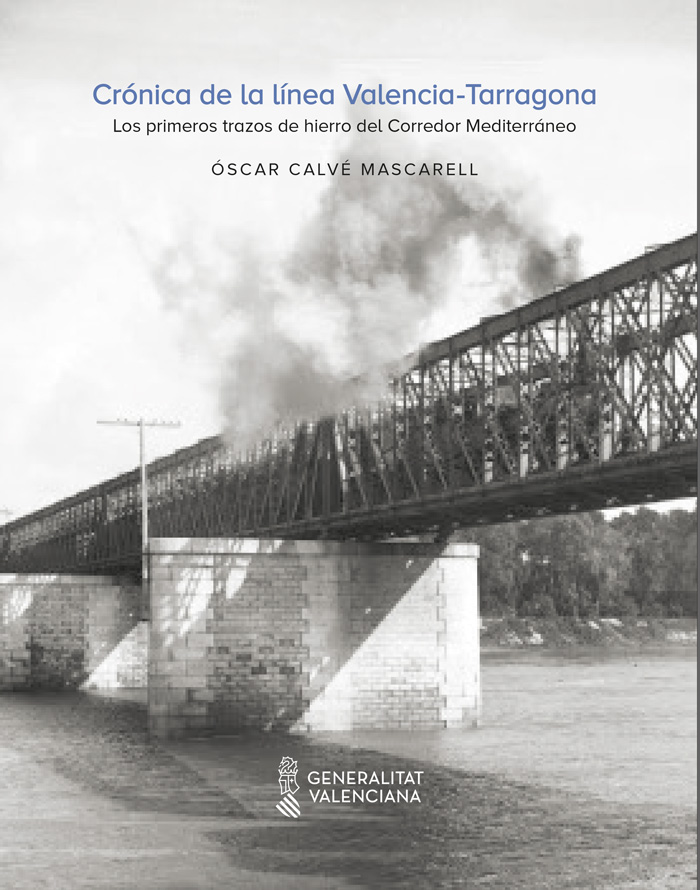
Valencia-Tarragona Railway Line Timeline
CALVÉ MASCARELL, Óscar
València: Ministry of Territory Policies, Public Works and Mobility , 2023. LlibrePromoted by the controversial figure of José Campo, the construction of the Valencia-Tarragona railway line (1862-1868) was the starting point of the Mediterranean Corridor in the Contemporary Age. Not in vain, already in its nineteenth-century conception, the section dealt with in this book was contemplated as part of the connection between Malaga and Naples. The volume selects more than a hundred press reports from the period and of varying ideological bias in order to address, with sufficient historical perspective, heterogeneous aspects relating to the creation of this line: the engineering challenges (where the construction of the bridges over the Turia in Valencia and over the Ebro...
Promoted by the controversial figure of José Campo, the construction of the Valencia-Tarragona railway line (1862-1868) was the starting point of the Mediterranean Corridor in the Contemporary Age. Not in vain, already in its nineteenth-century conception, the section dealt with in this book was contemplated as part of the connection between Malaga and Naples. The volume selects more than a hundred press reports from the period and of varying ideological bias in order to address, with sufficient historical perspective, heterogeneous aspects relating to the creation of this line: the engineering challenges (where the construction of the bridges over the Turia in Valencia and over the Ebro in Tortosa stand out), the controversies over the route associated with the feverish desire to reap the benefits of the new transport system, the uses and abuses of the promoters (with José Campo defined by some as a ‘champion of modernity’ and by others as a ‘criminal’) and the diversification of the workforce employed (from highly specialised English engineers to underprivileged children who acted as cheap labour). A material then intrinsically associated with modernity for its innovative use in construction and in the flamboyant presses of the newspapers that are the subject of this publication, but above all, for making possible and even giving a name, also in its Castilian meaning - the railway - to a mode of transport hardly dreamt of by mankind for millennia.
Read more HideChapters:
- The birth of the railway and the ‘Campoamor Law’
- The Valencia-Tarragona railway, a historical link between the Via Augusta and the Mediterranean Corridor
- Two paths destined to meet: The formation of the AVT Company and the gestation of the Valencia-Tarragona line
- Let's get down to work.
- From Valencia to Murviedro and the micro-history of an emblematic bridge
- From Murviedro to Nules
- The event of the first section: From Nules to Castellón de la Plana
- From Castellón de la Plana to Benicàssim and an ostentatious inauguration in Valencia
- Two large sections opened on 12 March 1865 in two sections: Benicàssim-Ulldecona and Amposta-Tarragona.
- From Ulldecona to Les Ventalles and from Tortosa to Amposta, the stagecoach section of the line.
- Les Ventalles - Tortosa: the last stage before the bridge over the Ebro.
- The bridge over the Ebro and the crowning of the line
- A troubled service
- Conclusions
-

The País Valencià's Roads of Antiquity
ARASA i GIL, Ferran
València: Ministry of Territory Policies, Territory and Mobility , 2022. LlibreFor archaeology, roads are a specific category of remains produced by human activity as a result of communication needs. In their most developed form, that of communication channels suitable for wheeled vehicles, they have been well identified at least since the Iberian period, and their construction became widespread in Roman times. The form they take as archaeological sites is peculiar, different from others with larger surfaces and concentrated development, such as settlements or necropolises. Roads are linear, narrow and very long sites, and as such present a particular problem for their study and also pose different protection needs. The construction of roads became widespread with...
For archaeology, roads are a specific category of remains produced by human activity as a result of communication needs. In their most developed form, that of communication channels suitable for wheeled vehicles, they have been well identified at least since the Iberian period, and their construction became widespread in Roman times. The form they take as archaeological sites is peculiar, different from others with larger surfaces and concentrated development, such as settlements or necropolises. Roads are linear, narrow and very long sites, and as such present a particular problem for their study and also pose different protection needs. The construction of roads became widespread with the Roman conquest and constituted one of the fundamental pillars of the great territorial reorganisation programmes set in motion at the beginning of the Empire, such as that begun by Augustus in Hispania. This basically consisted of the construction of a series of major strategic axes which - in a highly centralised state - guaranteed communication with the capital, Rome. The far-reaching nature of this programme meant that it continued throughout the 1st century AD, under the reign of different emperors, with the intervention of all the administrations. The work presented here is intended as a state of the art on the history of roads in Antiquity. This work aims to question the history of the pathways of Anquity in the Valencian Country, the Iberian world and the Roman period throughout nine centuries. A relevant novelty is taking a closer look in details that allow to go back the history of some centuries ago to the Iberian era and the first findings of Republican era roads and the transition phase between these two great Mediteranean cultures that interacted with the Valencian lands.
Read more HideChapters
Introduction
- Physical environment and terrestrisl communication
- Iberian culture
2.1. Source news
2.2. Iberian paths - Conquest of Rome
3.1. Sources: from the 2nd century b.C. to the end of the republic
3.2. First railway action
3.3. Republican life. The archaelogical evience
3.4. Other roads
3.5. Republic era paths - Empire path
4.1. Vehiculatio or cursus publicus
4.2. Itineraries
4.3. Constructive techiques
4.4. River passages - Via Augusta
5.1. Sources
5.2. Posts
5.3. Milestone
5.4. Via Augusta building
5.5. Trace through País Valencià - Secondary network
6.1. Northern regions
6.2. Central regions
6.3. Southern regions
Conclusions
Details
[Read more] [Hide] ISBN: 978-84-482-6751-3 -
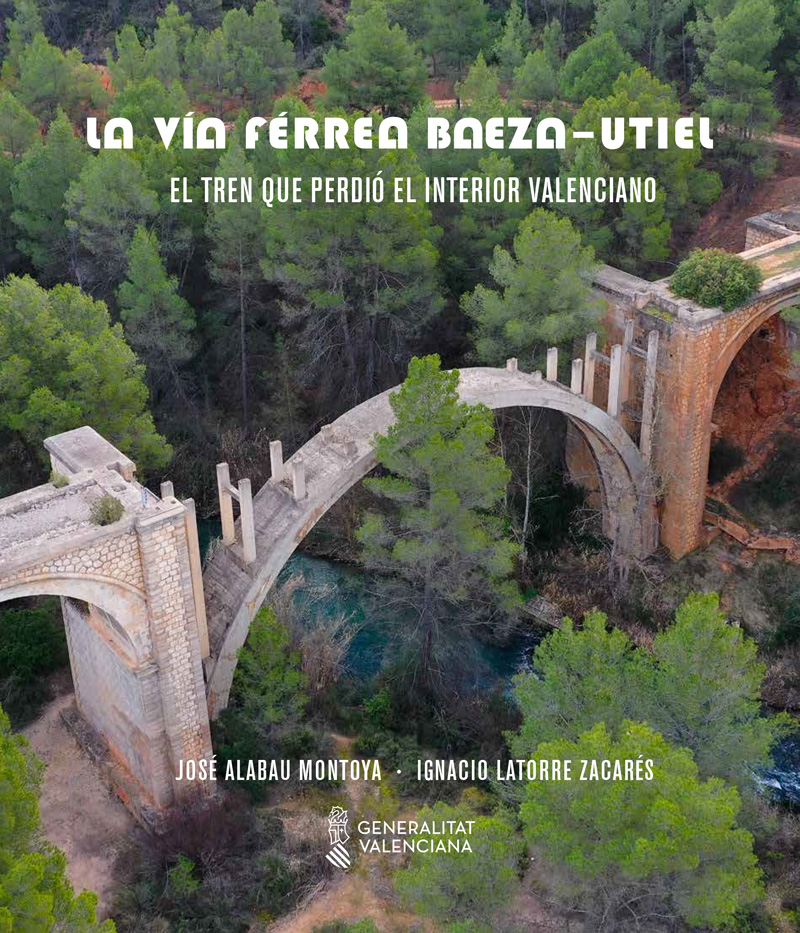
Baeza-Utiel Railway
ALABAU MONTOYA, José and LATORRE ZACARÉS, Ignacio
València: Council of Territory Policies, Public Works and Mobility , 2022. LlibreThe idea of linking France and Africa with a railway system that would go through Spain from North to South to form a possible connection with the Spanish and French protectorates in nothern Africa came to the mind of Spanish and French politicians of the 19th century. One of these projects was approved during the Primo de Rivera dictatorship (1926): a transversal line from Baeza (Jaén) up to Saint Girons in souther France that went through Jaén, Albacete, Valencia, Teruel and Lleida as an alternative to the system of the moment. This study focuses on the BaezaUtiel railway, which was the first line of this marcoproject and covered 370 km, with specia attention to the Valencian part...
The idea of linking France and Africa with a railway system that would go through Spain from North to South to form a possible connection with the Spanish and French protectorates in nothern Africa came to the mind of Spanish and French politicians of the 19th century. One of these projects was approved during the Primo de Rivera dictatorship (1926): a transversal line from Baeza (Jaén) up to Saint Girons in souther France that went through Jaén, Albacete, Valencia, Teruel and Lleida as an alternative to the system of the moment. This study focuses on the BaezaUtiel railway, which was the first line of this marcoproject and covered 370 km, with specia attention to the Valencian part (its 4th section) going from Albacete to Utiel.
Read more HideChapters
- The railway. Symbol of progress
- Justification of the Baeza-Utiel line. First projects
- The strategic railway Baeza-Requena.
- From yearnings to realities
- The definitive Baeza-Utiel project
- Spatial structure and characteristics of the Baeza-Utiel line
- The fourth section: Albacete-Utiel
- The railway complex of Utiel station
- The biggest railway waste in the world
- The Utiel-Teruel line
- The impact on the rural society of the construction of a railway that was not: When hope reaches the deepest interior
- Railway heritage and industrial archaeology
- What the Baeza-Utiel railway has left us
- State of the infrastructures, potential and possible future uses
- Conclusions
- Cartography
- Geographical inventory of the inventoried elements of the built railway heritage of the Baeza-Utiel line in the province of Valencia (Venta del Moro-Utiel section)
- Chronology
Details
[Read more] [Hide] ISBN: 978-84-482-6721-6 -
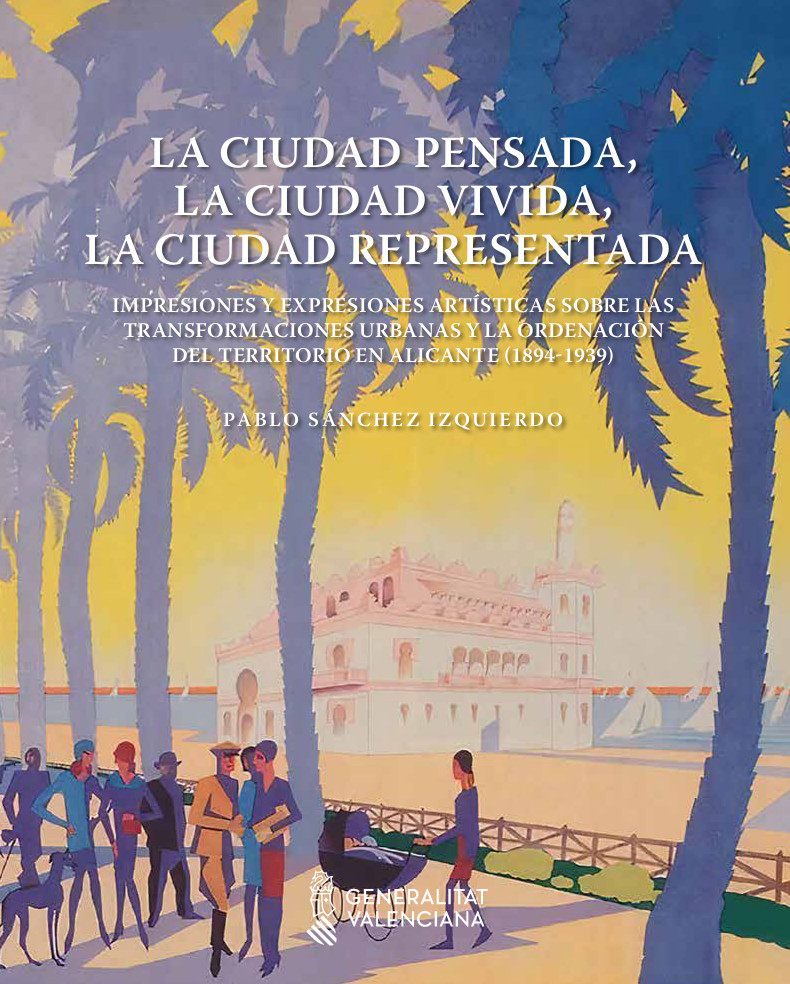
Thought City, Lived City, Represented City
SÁNCHEZ IZQUIERDO, Pablo
València: Ministry of Territory Policies, Public Works and Mobility , 2021. LlibreThis study offers a search of artistic expressions that help see how writers musicians, painters, scultors, architects and artists perceived the city of Alicante in a similar way, comforming its image and contributing with art to the identity tthat unified urban refurbishment and territory ordenance with the inhabitants feelings. It is a journey from the city's inside to its outside throughout its streets and avenues in the urban centre and districts. It is also a walk through the sea view, from the Mediterranean to the natural scenery of Alicante. A return to the province's capital, not to study its characteristic image of late 19th century and early 20th century, but to see how it was...
This study offers a search of artistic expressions that help see how writers musicians, painters, scultors, architects and artists perceived the city of Alicante in a similar way, comforming its image and contributing with art to the identity tthat unified urban refurbishment and territory ordenance with the inhabitants feelings. It is a journey from the city's inside to its outside throughout its streets and avenues in the urban centre and districts. It is also a walk through the sea view, from the Mediterranean to the natural scenery of Alicante. A return to the province's capital, not to study its characteristic image of late 19th century and early 20th century, but to see how it was destroyed and rebuilt during the Civil War and how relations appeared between urban space, inhabitants and artists who went from pride to fear, to political committment and humanity.
Read more HideChapters
- Introduction. Towards the definition of a theme
- About the transformation of Alicante between the 19th and 20th centuries
- Population growth. Health, development and proliferation of new urban services
- Recognition and gratitude. Politics and the city
- The demands of the forgotten. The workers' movement in the provincial capital.
- Longing for culture. The promotion of school groups
- The press and the development of Alicante
- The bourgeoisie, participants in the changes in the city
- The shaping of Alicante's cultural landscape through the arts. Impressions and expressions of the perceived environment
- In search of the modern city: the expansion and interior reform of Alicante
- The Benalúa neighbourhood, an exemplary residential area
- Housing, leisure and tourism on the shores of the Mediterranean
- The city on the fringes of the city
- The impact of tourism and the transformation of San Juan beach
- ‘So ours, so of our land’. Artistic appreciations of Alicante's surroundings
- The city under siege. The transformation of Alicante during the Civil War in the eyes of the artists
- Conclusions
Bibliography and sources
Details
[Read more] [Hide] ISBN: 978-84-482-6649-3 -
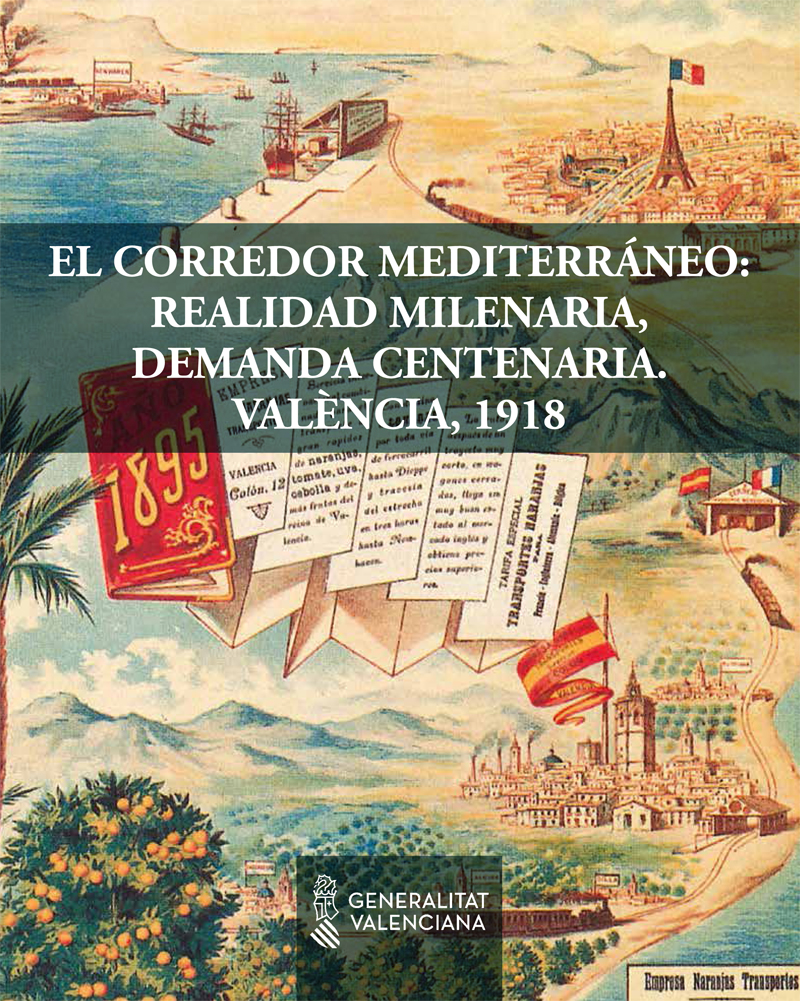
The Mediterranean Corridor: Millenary Reality, Century Demand. València, 1918
ARCINIEGA GARCÍA, Luis (dir.)
València: Ministry of Housing, Public Works and Territory Planning , 2018. LlibreThis publication brings together a whole process that links the diffuse commemoration of the second millennium of the Via Augusta with the centenary of Ignacio Villalonga's claim for a railway axis that would run along the Mediterranean peninsular coast and communicate with trans-Pyrenean Europe. This publication brings together a whole process that links the diffuse commemoration of the second millennium of the Via Augusta with the centenary of Ignacio Villalonga's claim for a railway axis that would run along the Mediterranean peninsular coast and communicate with trans-Pyrenean Europe. Since ancient times, the Mediterranean axis has been of great importance for the communication of...
This publication brings together a whole process that links the diffuse commemoration of the second millennium of the Via Augusta with the centenary of Ignacio Villalonga's claim for a railway axis that would run along the Mediterranean peninsular coast and communicate with trans-Pyrenean Europe. This publication brings together a whole process that links the diffuse commemoration of the second millennium of the Via Augusta with the centenary of Ignacio Villalonga's claim for a railway axis that would run along the Mediterranean peninsular coast and communicate with trans-Pyrenean Europe. Since ancient times, the Mediterranean axis has been of great importance for the communication of people and ideas and the distribution of goods. In medieval and modern times it gave way to a fragmented road network, and from the second half of the 18th century to a radial peninsular layout. These characteristics were transferred in the following century to the railway network, which, due to the diversity of companies, became extremely fragmented. In the Valencian sphere, in the first decades of the 20th century, there was a constant request for improvements in infrastructures and communications with a view to the development of the economy. Between the Regional Exhibition of Valencia in 1909 and the First World War, there were requests for improvements to the port, a direct train linking it with Madrid via Utiel and a Mediterranean rail corridor. In the latter case, the proposal made by Ignacio Villalonga in 1918 stands out. Social, economic and political realities prevented or delayed most of the proposals. The incorporation of Spain into the European Union in 1986 allowed this circumstance to be reconsidered. The Mediterranean Corridor, in a new supranational articulation, can be seen in the network of multimodal corridors of the European Union.
Read more HideChapters
- ‘The Via Augusta: a millenary network’. Desirée Juliana Colomer
- ‘The arc of culture in the medieval twilight’. Óscar Calvé Mascarell
- "Paths, roads and motorways. The Mediterranean as a transversal itinerary". Manuel Carreres Rodríguez
- ‘Conformation of the railway axis on the Mediterranean coast’. Laura Bolinches Martínez
- ‘100 years of claims for the Mediterranean Corridor, 1918-2018’. Susana Climent Viguer
- ‘The Palace of Arts and Industries: Apollo and Mercury in Valencia’. Luis Arciniega García
- "The Mediterranean Corridor. A trans-European infrastructure". Rubén Pacheco Díaz
Details
[Read more] [Hide] ISBN: 978-84-482-6285-3 -
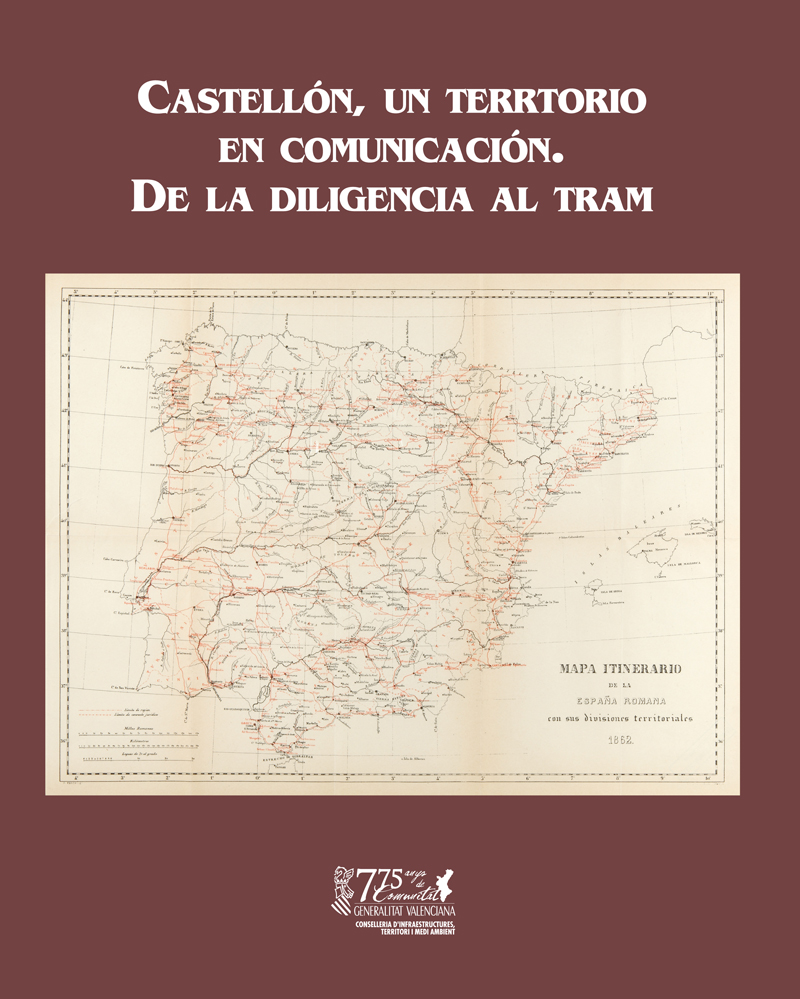
Castellón, a Communication Territory
AGUILAR CIVERA, Inmaculada (coord.)
València: Council of Infrastructure, Territory and Environment , 2013. LlibreChapter:
- PRADES, José, 'Preamble'.
- SORIANO MARTÍ, Francisco Javier; PONS CHUST, Raül, 'Castellón geographic environment'.
- CHIVA BELTRÁN, Juan, 'Territory planning. From historic aths to national roads'.
- MUÑOZ, Miguel, 'Railway network of Iberian reach of Castellón between 1865 and 1929. Railway mobility at region development service'.
- PONS CHUST, Raül, 'La Panderola (1888-1963): historic approach'.
- CLIMENT VIGUER, Susana, 'Castellón docks and communication traffic in the 20th century'.
- CÁMARA BOLUDA, Vanesa; BAU IZQUIERDO, Rafael, 'Road communication evolution in the Castellón region duing the 20th century'.
- PIQUERAS ARENAS, José Antonio, 'Slow pace towards modernity: economy and uneven transformtion of the 19th century'.
- GUERRERO CAROT, Francisco, 'La Plana and Castellón inland: repaired incommunication (20th century)'.
- MÍNGUEZ, Víctor, 'La Plana roads and urban transformation of Castellón city'. [pdf]
- RODRÍGUEZ MOYA, Inmaculada, 'A dock for Castellón: history of its architecture and infrastructure'.
- SORIANO MARTÍ, Francisco Javier, 'Rethinking the city'.
- AGUILAR CIVERA, Inmaculada, 'Landscape, territory and railways of communication. Public work patrimony approach'.
[Read more] [Hide] ISBN: 978-84-482-5888-7 -

The Alicante Tramway
AGUILAR CIVERA, Inmaculada (coord.)
València , 2007. LlibreChapters:
- AGUILAR CIVERA, Inmaculada, "Introduction. The tramway in the historical memory of a city: Alicante".
- GIMÉNEZ CHORNET, Vicent, "Tramway origin. Historical background".
- VIDAL, Javier, ‘New public services and the city of Alicante in the 19th century’.
- GARCÍA ORTELLS, Virginia, ‘First urban tramway of Alicante: Los Nueves’.
- COVES NAVARRO, José Vicente, ‘La Compañía General de Tranvías y Ferrocarriles Vecinales: Steam tramways of Crevillente and Muchamiel’.
- PEÑA LIGERO, Ángel, ‘Tramway Line 3: Alicante-San Vicent del Raspeig’.
- MARTÍNEZ LÓPEZ, Alberte, ‘Electric Tramways of Alicante: late electrification in charge of the Belgium capital’.
- GÓMEZ MARTÍNEZ, José Antonio, ‘Tramway and Electricity S.A. 1923-1956 and the Tramway Region Service 1956-1969’.
- GONZÁLEZ MÁRQUEZ, Manuel, ‘Mobile material of Alicaante tramways’.
- ALBA LÓPEZ, Jesús, ‘Impact of Alicante's tramway: casting the city’.
- PEREA, José Mª, ‘Tramway and everyday life’.
- AGUILAR CIVERA, Inmaculada, ‘Alicante's TRAM everyday, 9 years of history 1998-2007’.
[Read more] [Hide] ISBN: 978-84-482-4662-4 -
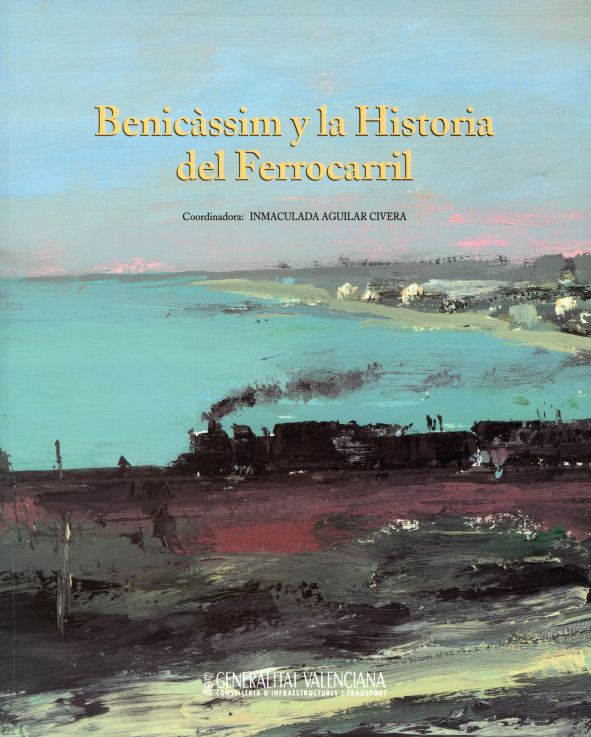
Benicàssim and the Railway History
AGUILAR CIVERA, Inmaculada
València: Council of Infrastructure and Transport , 2006. LlibreChapters
- AGUILAR CIVERA, Inmaculada, 'Introduction. Benicàssim and the railway as an argument in its history'.
- PERIS TORNER, Juan, ‘Early times of the railway in Benicàssim from its establishment until the acquisition of the “Almansa á Valencia and Tarragona” by the company of the “Caminos de Hierro del Norte de España”’.
- QUEREDA SALA, José, 'Benicàssim. Transformation and landscape. From a summer colony to a tourist centre par excellence'.
- ORTELLS CHABRERA, Vicente, 'Railway and urban construction. From a village on the Camino Real to the network city of the 21st century'.
- SANTOS Y GANGES, Luis, ‘Benicàssim old railway's urbanistic role; Urban structure and growth, central and suburbs of the city’.
- AGUILAR CIVERA, Inmaculada, ‘Testimonies and memories of railway culture’.
- CERRILLO MARTÍNEZ, Julia, ‘The culture of water in Benicàssim: from recreational baths to health baths’.
- RODRÍGUEZ MOYA, Inmaculada, 'Architecture, transport and territory. The Villas of Benicàssim'.
- PORTOLÉS GÓRRIZ, Ángel; CERVERA SOLER, María, The Villas of Benicàssim, "Biarritz de Levante". Society, fashion and bathing culture'.
- TÀRREGA i LATORRE, Josep Lluís, ‘City, society and railway network’.
- RICO GARCÍA, Ignacio (coord.), 'Appendix. Survey on the railway in Benicàssim'.
[Read more] [Hide] ISBN: 978-84-482-4411-7 -
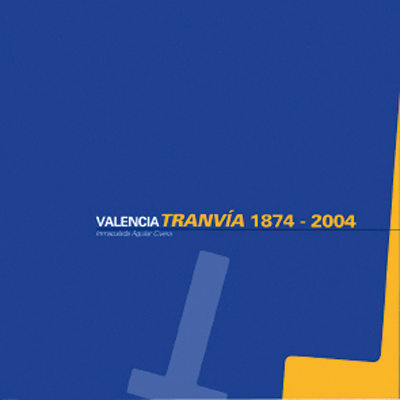
Valencia Tramway 1874-2004
AGUILAR CIVERA, Inmaculada
València , 2004. Llibre ISBN: 978-84-606-3599-6


